John M'Ure's View of the City of Glasgow - the first history of the city
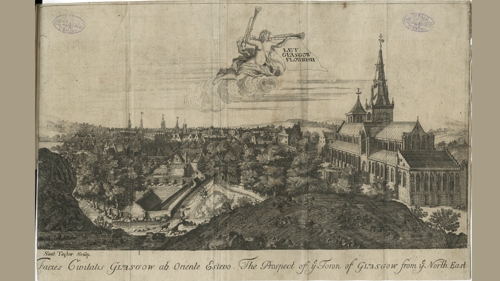
As part of Doors Open Day 2025 the Mitchell Library Special Collections department showcased a selection of ‘Glasgow Firsts’. These are early printed items that are important to the history of Glasgow including the first book printed in the city and the first newspaper. This blog is part of a mini series to accompany the items on display.
This blog explores a book from our collection: The City of Glasgow; or, an account of its origin, rise, and progress, with a more particular description thereof than has hitherto been known, by John M'Ure.
This first history of the city was written by the author in 1736 when he was 85 years old. He had been Clerk to the Register of Sasines and as such had access to “many antient records, charters, and other antient vouchers, and from the best historians and private manuscripts”.
The book was printed by James Duncan, who as well as being a printer, was a type-founder and a paper manufacturer. The City of Glasgow was in fact printed using Duncan's own type. James Duncan was "Printer to the City", and the books were sold at his shop, "near Gibson's-Wynd, in the Salt-Market Street".
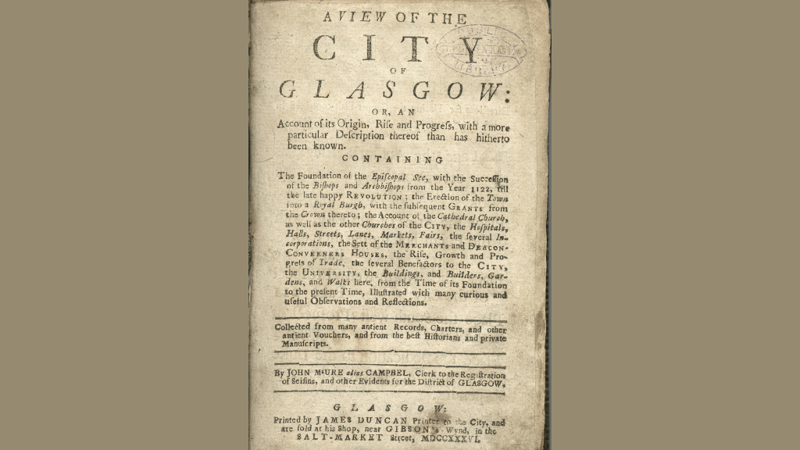
A View of the City of Glasgow
A Stirlings Public Library stamp at the top left of this title page reveals the provenance of this rare book.
Stirlings was founded in 1791.
The full title gives more detail about what is to be found within: A view of the city of Glasgow : or, an account of its origin, rise and progress ... Containing The Foundation of the Episcopal See, with the Succession of the Bishops and Archbishops from the Year 1122, till the late happy Revolution; the Erection of the Town into a Royal Burgh ... the Account of the Cathedral Church, as well as the other Churches of the City, the Hospitals, Halls, Streets, Lanes, Markets, Fairs, the several Incorporations, the Sett of the Merchants and Deacon-Conveners Houses, the Rise, Growth and Progress of Trade, the several Benefactors to the City, the University, the Buildings, and Builders, Gardens, and Walks here, from the Time of its Foundation to the present Time.
At the time McUre was writing, Glasgow's industries were growing. There was a new glassworks at Broomielaw, making bottles for the export of beer, a "soaperie", three tanneries, and four sugar houses, processing sugar grown by enslaved people, imported to Glasgow from the Caribbean.
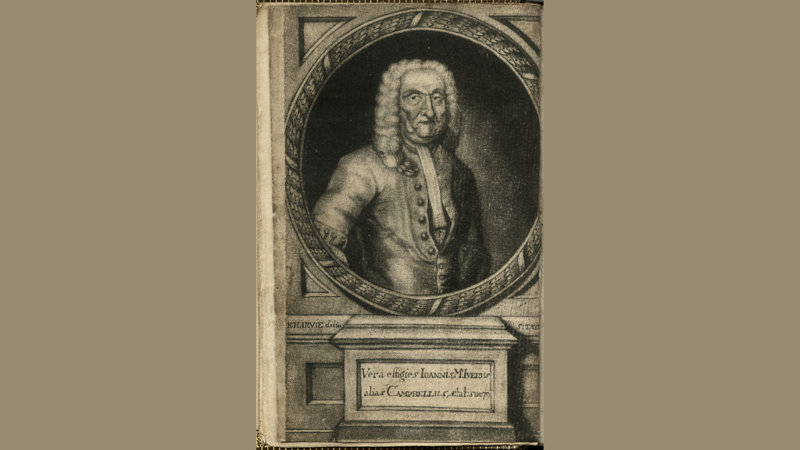
Portrait of John McUre
from the frontispiece of the 1736 edition
Who was John McUre?
McUre was a member of the Faculty of Advocates, and his legal practice is said to have been with farmers who paid him in kind as well as in coin. He was often spotted riding home over Rutherglen Bridge with chickens and geese hanging from his pockets.
Nineteenth century historians tended to regard him as an old-fashioned gossip. His account of the early period of the history of the city is far from reliable but for the city of his own time he is accurate and useful.
He lived in a building in Princes Street and Saltmarket, named Gibson's Land, and over his door was inscribed Joannes Maciverus - Pax intrantibus, a motto which translates as Peace to those who enter, good health to those who depart.
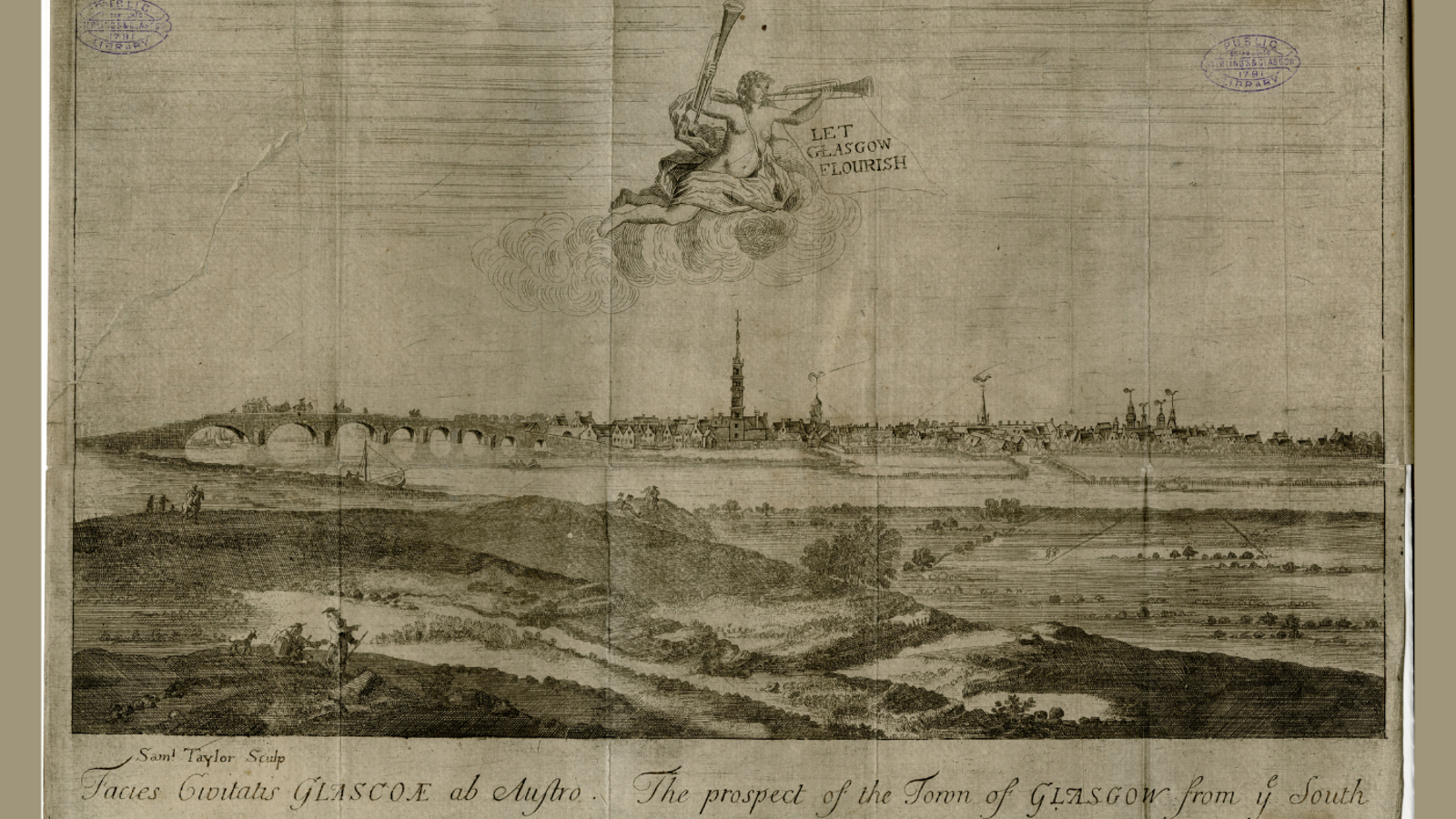
Illustrations
Two delicate illustrations, engraved by Samuel Taylor, are neatly folded into this copy of the book. Unfolded, they are almost three times the width of the small volume.
One view, at the top of this page, shows Glasgow as viewed from the hill next to the Cathedral, looking West. The college can be seen on the left of the scene, and the houses and spires of the town stretch out West.
The other view (above) is Glasgow from the South, where the Gorbals is now. Several boats can be seen on the River Clyde, as people walk and rest on the banks in view of the spires and weather vanes.
On both, a cherub plays a trumpet, sending out the now familiar refrain, "Let Glasgow Flourish".
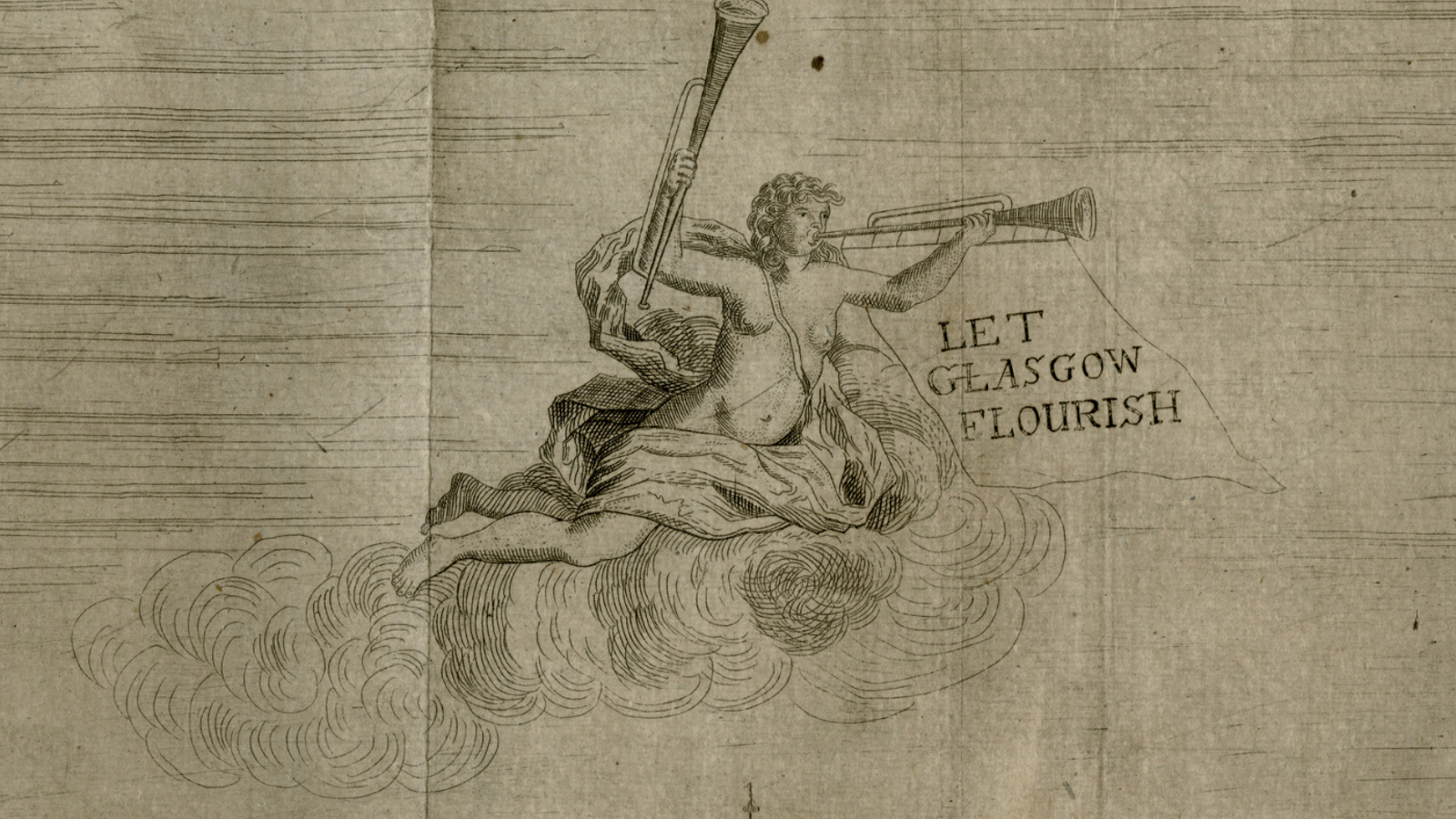
Later editions
The book was reprinted in 1830,1872 & 1940.
The 1872 edition, edited by antiquarian and minister James Frederick Skinner Gordon, contains a list of later historians whose work has been referenced for the new book.
He explains:
"M'Ure's Book, though the oldest, is yet the best we have on the subject. It is, at the same time, only too obvious that even if he could have had access to the Records from which the Annals of the City must be written, he was without the knowledge necessary either to read or to understand them. His mistakes, gross as they are, have been, for the most part, implicitly copied by his successors, a few of whom were more competent than himself, and some, indeed, were still more illiterate."
Find out more
Read the other blogs in this series:
The protestation of the Generall Assemblie: The first book printed in Glasgow
Make an appointment to read this book
Email specialcollections@glasgowlife.org.uk, or call 0141 287 2932
Special Collections